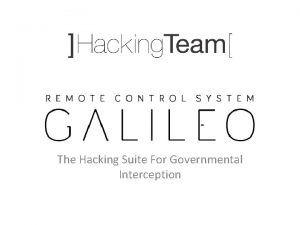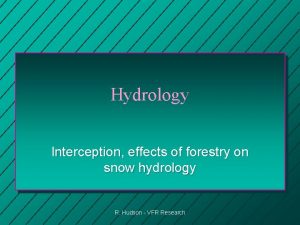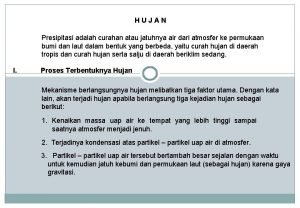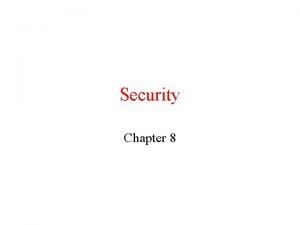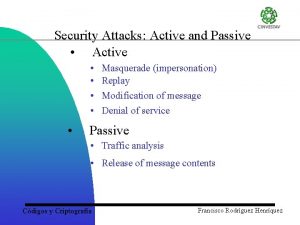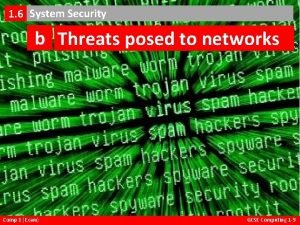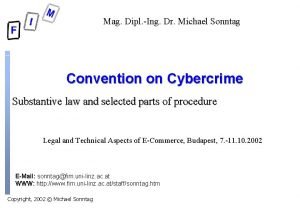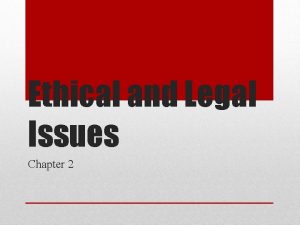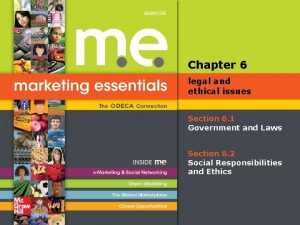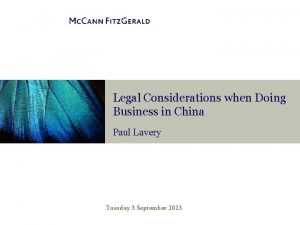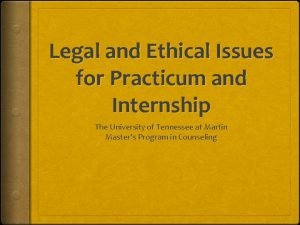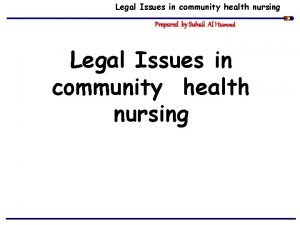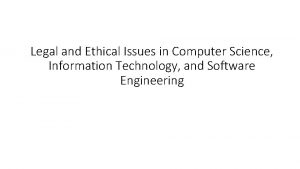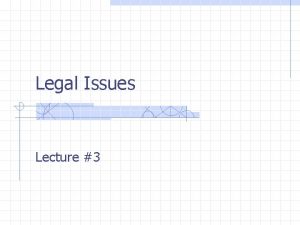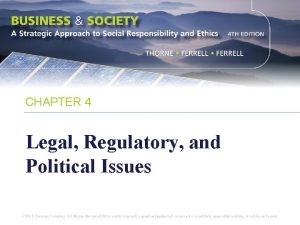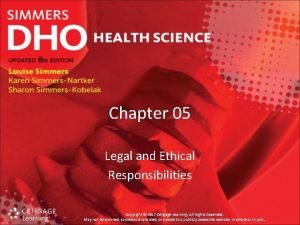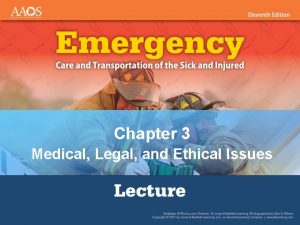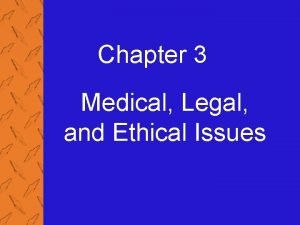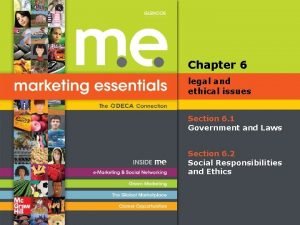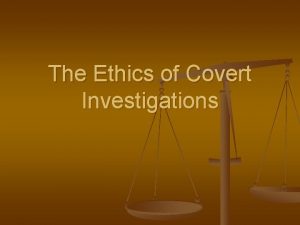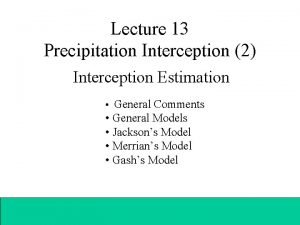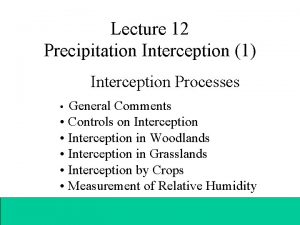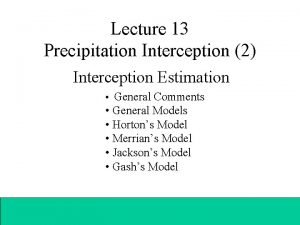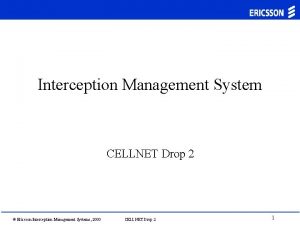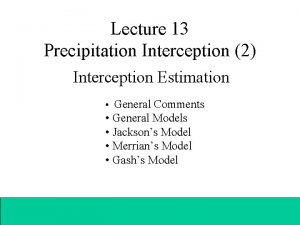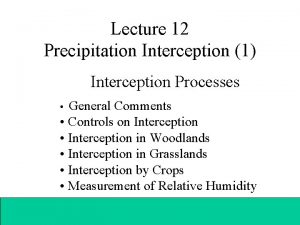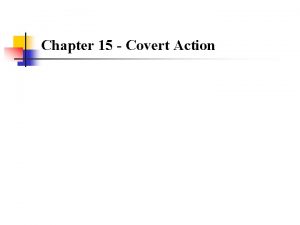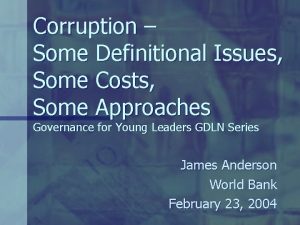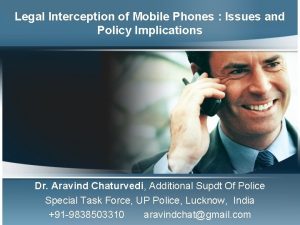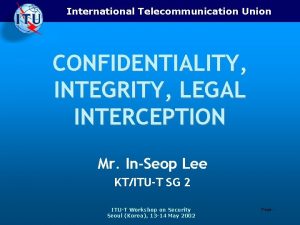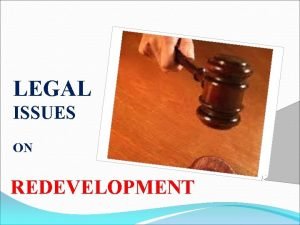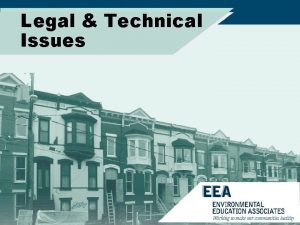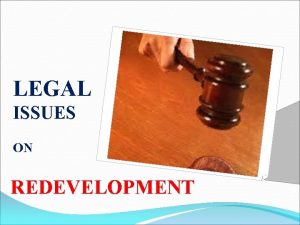Corruption Investigations Some Legal Issues Covert Investigations Interception





















- Slides: 21

Corruption Investigations: Some Legal Issues

Covert Investigations: Interception of Communications n n n Intercept Product may be for intelligence, evidence or both Various models of regulation Benefits/Challenges of live monitoring LPP Disclosure issues

Covert Investigations: Undercover Agents and Accomplices n n n Deployment of UC Agent usually requires judicial or administrative authorisation UC Agent’s methodology should preserve admissibility of evidence Corroboration is highly desirable

Witness Protection n n Extra-judicial and Judicial Basic principle: to minimise trauma and preserve the quality of their evidence, vulnerable witnesses should be protected whilst seeking to ensure the measures adopted do not deprive the defendant of his right to a fair trial

Witness Protection: Extra. Judicial n Witness Protection Programmes i) Ordinary witnesses ii) Tainted witnesses n Disclosure issues on nature of “benefits” afforded protected witness

Witness Protection: Judicial n n Issues: a) Does the witness need protection? b) Can measures be taken to protect the witness while preserving the fair trial rights of the accused? Use of Screens a) Child witnesses b) Adult witnesses Video conferencing Anonymous witnesses

Witness Protection: Judicial X v United Kingdom (1993) 15 E. H. H. R C. D. 113 [Witness screened from Everyone except Judge and Counsel] Held fair trial rights not breached as: n Was no restriction on XXN n Was not the only basis of the judgment n Only interference with right to public hearing was exclusion from sight

Witness Protection: Judicial Doorson v Netherlands (1996) 22 E. H. H. R 33 [Identity of 2 witnesses withheld from the defence. Defendant was drug dealer] Held there were sufficient safeguards to counterbalance defence handicaps as: n Anonymous witnesses were questioned in presence of Counsel by Magistrate who new their identity n Magistrate gave basis on which he assessed the reliability of their evidence

Doorson v Netherlands Held cont’d n Counsel was present and could ask any question that might lead to identification of witnesses n While it is accepted a conviction should not be solely or mainly based on such evidence, that was not the situation in the instant case n Evidence obtained under conditions where the rights of the defence under the ECHR cannot be secured in usual ways should be treated with extreme care

Taking Witness Statements from Co-operating Defendants n n n Defendant has been convicted and Sentenced Defendant convicted but not sentenced Defendant neither convicted nor sentenced Requests for Immunity Cautioned Statements

The Charging Decision n n Often based on multiple inputs e. g. anticorruption investigative units, immigration, customs, organised crime units, FIU’s etc. Best charges and cases flow from early broad based investigative and prosecutorial collaboration within boundaries of domestic law Corruption offences or General offences? Be careful to avoid overloaded/duplicitous indictment Alternative/Lesser Charges

Human Rights Declaration of Commonwealth Principles n UN Charter n Other International and Regional Instruments n

Restrictive Rights IHRL permits States to restrict or limit certain rights to allow for public order/safety. However, such limitations must be: n Lawful n Necessary n Proportionate

Relevant Rights engaged Right to privacy/family life [Article 17 ICCPR, Article 27 African Charter refers to family within the context of society as a whole] n Right to a fair trial [See, e. g. , Art 7 of the African Charter and Art 6 of the ECHR] n

Right to Private/Personal Life n n A ‘qualified’ right. Must be a basis in domestic law for the breach, and that law must be clear and accessible. Must be necessary (in a democratic society) Must be a reasonable relationship of proportionality between the breach (e. g. covert means) used and the legitimate aim pursued. There must also be adequate and effective safeguards against the abuse of such methods.

Right to a Fair Trial n n n See, e. g, Art 7 of the African Charter and Art 6 of the ECHR An absolute or restrictive right? Equality of arms An impartial tribunal The opportunity to mount a ‘full’ and robust defence Disclosure by the prosecution/Handling sensitive information

ENTRAPMENT: R v LOOSELY Attorney General’s Ref. No 3 of 2000 n n Principle in R v Sang confirmed: entrapment is no defence in English law. The court has a jurisdiction to stay proceedings as an abuse of process and a discretion to exclude evidence.

R v LOOSELY cont’d. . . n However, a stay will usually be the most appropriate remedy in response to entrapment. In arguing entrapment, it is not being said that admission of the evidence will render the trial unfair; rather that it is unfair to try the defendant. A stay is appropriate because to continue the prosecution would be “an affront to the public conscience”, not because the defendant is not guilty of the offence or could not receive a fair trial.

R v LOOSELY cont’d. . . n Although an application to stay was the appropriate response to alleged entrapment, in limited circumstances a subsequent application to exclude evidence is not precluded.

Shaping a test for “Entrapment” Unexceptional Opportunity n Reasonable Suspicion n Proper Supervision n The “Loosely Test” applies to all covert activity: n UCs as well as TPs n

Conclusion n Investigative agencies should work as closely together as possible As far as laws allow, the prosecutor should guide investigations from as early as possible The human rights of the suspect should be protected and balanced against the wider public interests of societal protection and prevention of crime
 Lawful interception architecture
Lawful interception architecture Sms interception hack
Sms interception hack Interception hydrology
Interception hydrology At what precipitation does it rain
At what precipitation does it rain Interception interruption modification and fabrication
Interception interruption modification and fabrication Interception is an attack on
Interception is an attack on Interception fabrication modification interruption
Interception fabrication modification interruption What is data interception and theft
What is data interception and theft Dr michael sonntag
Dr michael sonntag Ethical and legal issues chapter 2
Ethical and legal issues chapter 2 Chapter 6 legal and ethical issues
Chapter 6 legal and ethical issues Legal issues in international business
Legal issues in international business Ethical and legal issues involved in practicum
Ethical and legal issues involved in practicum Legal aspects of community health
Legal aspects of community health Ethical issues in computer science
Ethical issues in computer science Legal issues in hrm
Legal issues in hrm Legal regulatory and political issues
Legal regulatory and political issues Ethical and professional issues in information security
Ethical and professional issues in information security Legal and ethical responsibilities chapter 5
Legal and ethical responsibilities chapter 5 Legal and ethical issues chapter 3
Legal and ethical issues chapter 3 Chapter 3 medical legal and ethical issues
Chapter 3 medical legal and ethical issues Chapter 6 legal and ethical issues
Chapter 6 legal and ethical issues

